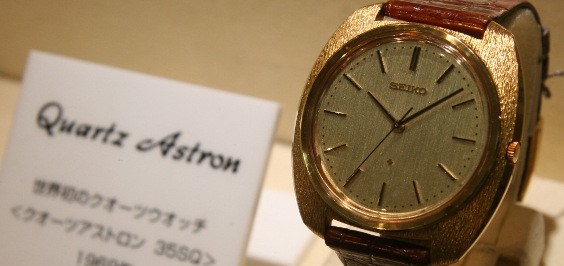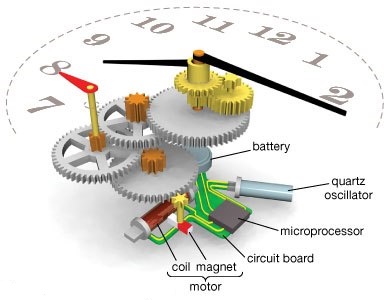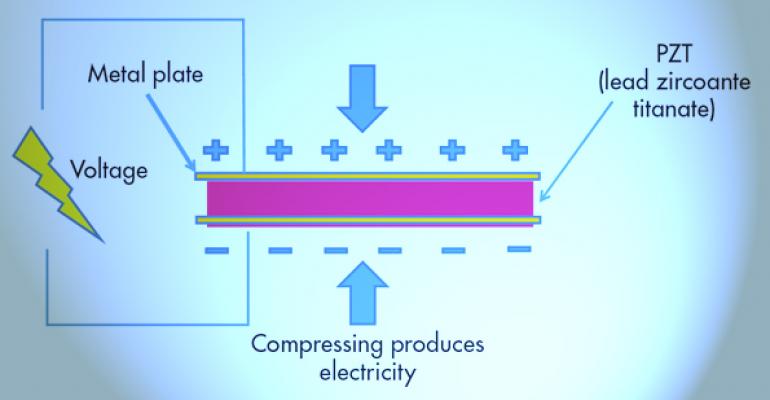Quartz Movements

The operating standard for accurate timekeeping was the pendulum clock, from the 17th century until the late 1920s. What changed this? Well, the answer is in the title! As it were, the quartz movement was introduced in the early years of the 20th century. Being even more precise than the first atomic clocks, these quartz-driven mechanics revolutionized the way folks keep track of time. Historically, the world’s first quartz time teller was a clock designed by Warren Morrison and J.W. Horton at the Bell Telephone Laboratories—in 1927. This technology was, in its early years, more novel in its use and presence. However, with the advent of commercially designed and manufactured quartz wristwatches in the late 1960s, this technology became more ubiquitous—and is still the most common form of movement in personal wristwatches (as well as wall clocks). Even more ubiquitous is the quartz mineral itself. Being the second most common mineral in Earth’s continental crust, this silicon-oxygen crystal plays a vital role in the mass production of modern clocks and watches.
In the 1980s, the quartz crystal was paired with solid state electronics for computing, appliances, and timekeeping. This evolution in tech made quartz movements even more compact and easier to manufacture. Thus, there is a veritable omnipresence of quartz movements around the globe today. Being so common, it can be easy to overlook the brass tacks of how they function. So, in continuing, let’s have a look at how these movements work in their day-to-day use.

How They Work
-The process of running a quartz movement starts with applying electric energy, typically from a battery, to a microchip circuit.
-From there, the microchip circuit makes the tiny quartz crystal—which is in the shape of a tuning fork—oscillate (vibrate). As it goes, the crystal oscillates 32,768 times per second.
-After waking the crystal up, the microchip circuit detects the vibrations of the crystal and turns them into electric pulses. There is one pulse for every second.
-The regular electric pulses drive a mini stepping motor. This translates electrical energy into mechanical power. A note: this “stepping motor” is a direct current motor that divides mechanical rotations into equal steps (thus the name).
-Finally, the electric stepping motor turns the gears—which enables the hands to make their way around the dial.

In this process, the mechanical stress that’s put on the quartz crystal causes it to create its own electrical output. In technical terminology, this is called piezoelectricity (deriving from the Greek piezo, meaning “to squeeze”). Essentially, the physical relationship the crystal has with the other components causes it to talk back to them. This electric dialog between the crystal, the microchip circuit, and the gears keeps everything ticking at regular intervals.
As it stands, quartz movements are incredibly precise. That being said, small variations in temperature—and circuitry decay over time—can have adverse effects on their function. As a result, quartz movements aren’t as accurate as their atomic time-keeping relatives. They have a tendency to lose minutes, instead of seconds, throughout the year. However, there’s a reason why these movements remain popular. Quartz movements are an affordable way to keep functionally accurate time. They also don’t require a radio signal to keep a regular stream of time on display. This puts them in a nice position between atomic and mechanical timekeeping in regard to practicality.
With a history that spans nearly a century, quartz movements have their own unique legacy in the world of watches and clocks. With continued global manufacture, they remain easy to maintain and repair—as well. So, keep an eye out for qualified watch and clock techs. They’ll keep your batteries fresh—and your quartz crystal oscillating—for years to come.
Times Ticking has been in operation for more than 30 years, since 1982. We have performed watch repair for customers both locally and internationally. If it Ticks! We KNOW it! Our team of watch repair technicians have a combined experience in watchmaking of over 120 years.

